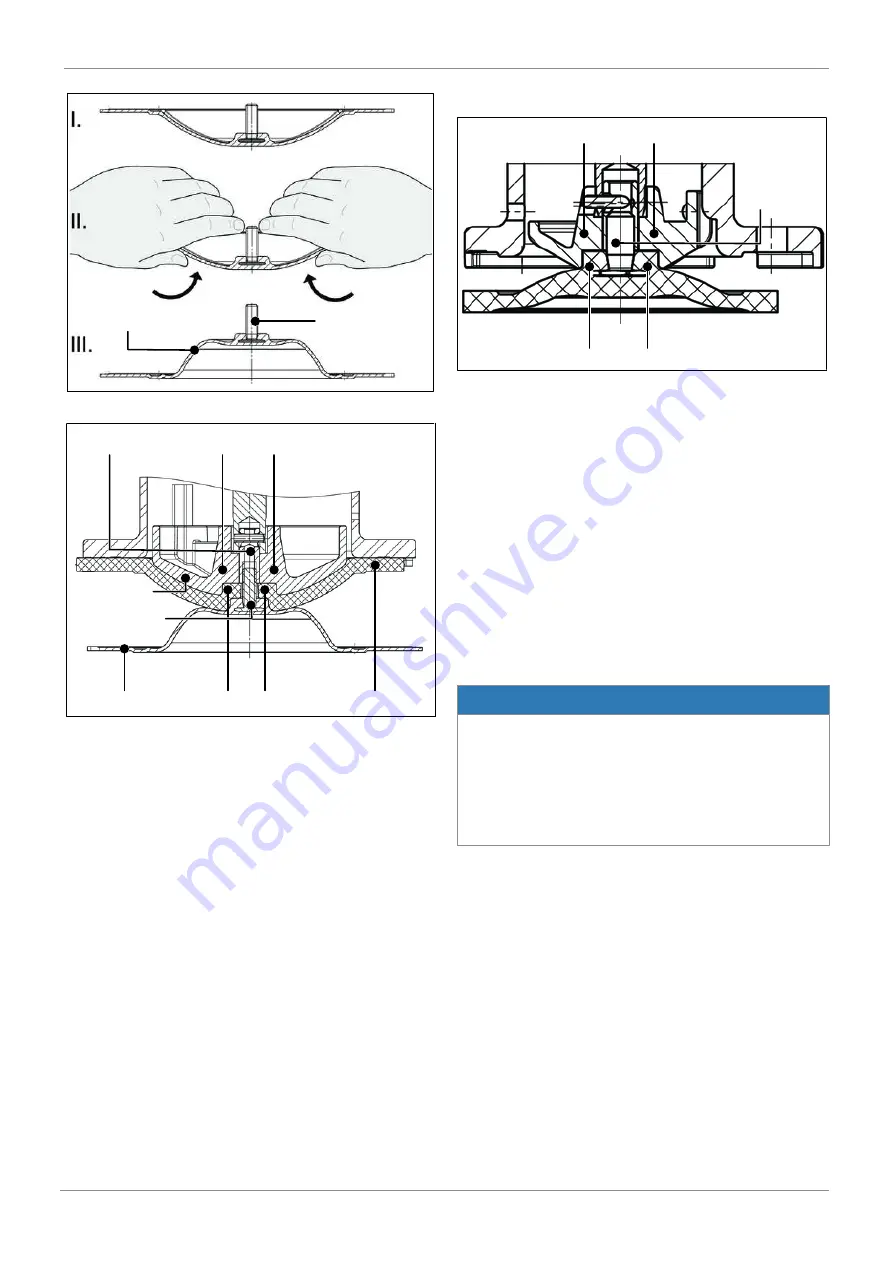
www.gemu-group.com
35 / 41
GEMÜ R629 eSyLite
Diaphragm pin
Diaphragm face
Fig. 6: Inverting the diaphragm face
Compressor
Backing diaphragm
Diaphragm face
Diaphragm boss
Diaphragm pin
Adapter
Recess of compressor
Fig. 7: Screwing in the diaphragm face
1. Move the actuator
A
to the closed position.
2. Mount the compressor (see "Mounting the compressor").
3. Check if the compressor is fitted in the guides.
4. Invert the new diaphragm face manually (use a clean, pad-
ded mat with larger nominal sizes).
5. Position the new backing diaphragm onto the compressor.
6. Position the diaphragm face onto the backing diaphragm.
7. Screw diaphragm face tightly into the compressor manu-
ally.
ð
The diaphragm boss must fit closely in the recess of
the compressor.
8. If it is difficult to screw it in, check the thread and replace
damaged parts.
9. When definitive resistance is felt, turn back the diaphragm
until its bolt holes are in correct alignment with the bolt
holes of the actuator.
10. Press the diaphragm face tightly onto the backing dia-
phragm manually so that it returns to its original shape
and fits closely on the backing diaphragm.
11. Align the weir of compressor and diaphragm in parallel.
12.5.2 Mounting the concave diaphragm
Diaphragm boss
Diaphragm pin
Recess of compressor
1. Move the actuator
A
to the closed position.
2. Mount the compressor (see "Mounting the compressor").
3. Check if the compressor is fitted in the guides.
4. Manually screw new diaphragm tightly into the com-
pressor.
5. Check if the diaphragm boss fits closely in the recess of
the compressor.
6. If it is difficult to screw it in, check the thread and replace
damaged parts.
7. When definitive resistance is felt, turn back the diaphragm
until its bolt holes are in correct alignment with the bolt
holes of the actuator.
8. Align the weir of compressor and diaphragm in parallel.
12.6 Mounting the actuator
NOTICE
Diaphragms set in the course of time
▶
Leakage.
●
After disassembly/assembly of the product, check that
the bolts and nuts on the body are tight and retighten if
required.
●
Retighten the bolts and nuts at the very latest after the
first sterilisation process.
1. Move the actuator
A
to the open position.
2. Position actuator
A
with the mounted diaphragm on the
valve body.
3. Screw in bolts, washers and nuts hand tight.
ð
Fastening elements may vary depending on the dia-
phragm size and/or valve body version.
4. Move the actuator
A
to the closed position.
5. Open actuator
A
approx. 20%.
6. Fully tighten the bolts with nuts diagonally.
7. Ensure even compression of the diaphragm (approx. 10 to
15%).
ð
Even compression is detected by an even outer bulge.
8. With the valve fully assembled, check the function and
tightness.
9. Carry out initialisation.
12 Inspection and maintenance





















